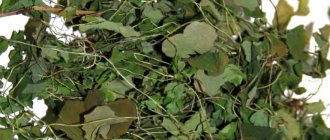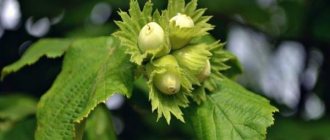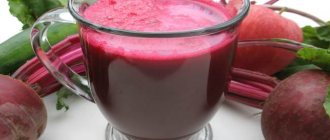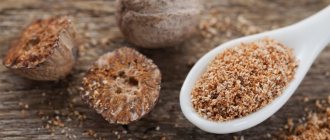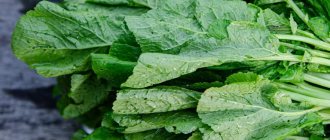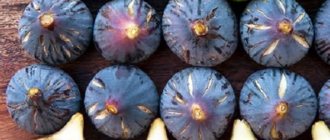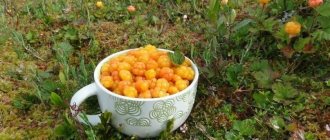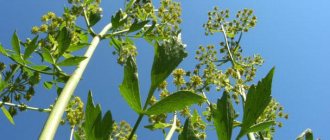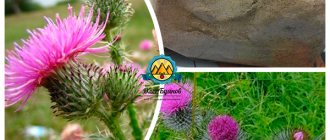What is saffron and its beneficial properties
Saffron is the most expensive spice in the world. And this cost is completely justified, because its cultivation and harvesting is very expensive, and is also carried out manually. Saffron is the stigma of crocus flowers, which bloom for only one week of the year. They have to be collected early in the morning, before sunrise, and preferably on the first day of flowering.
Important! Only Crocus sativus is suitable for the production of saffron, because other species of this flower are poisonous.
To get 1 kg of spice, you need to pick about 200 thousand crocuses. The petals and leaves of this plant also have nutritional and medicinal value. This plant is rarely found in the wild. It is cultivated in Iran, Spain, India and some other countries.
There are many varieties of saffron, with prices ranging from $400 to $4,000 per kilogram. But since milligrams of this very aromatic spice are taken for food consumption, it is quite possible to buy the required amount. An adult needs no more than 1 gram per year.
Real saffron is very beneficial for health, and it also favorably emphasizes the taste and aroma of various dishes and drinks. It is also used in cosmetology as a fairly effective remedy.
A high-quality spice consists of stigmas of dark red or burgundy flowers, with a brown tint and yellow splashes. They consist of many threads intertwined with each other. There are approximately 400 such threads in one gram. For cooking, 3-5 pieces are usually used, and for brewing tea - 1-2.
Saffron gives dishes a unique taste with a spicy bitterness and a floral-vanilla aroma. Indian and Spanish saffron are most valued. But the spice grown in Iran is not so valuable, but no less high quality. Iranian saffron accounts for 80% of the total grown worldwide.
- Thanks to its rich composition, this spice has the following healing properties:
- strengthens and rejuvenates the body;
- helps fight cancer cells;
- effectively relieves pain and spasms;
- increases hemoglobin and normalizes blood pressure;
- helps maintain good vision for a long time;
- improves the functioning of the kidneys and genitourinary system;
- increases libido, especially in women;
- relieves menstrual pain and normalizes the cycle;
- strengthens efforts and helps cleanse the body after childbirth;
- improves brain activity, strengthens memory and prevents the appearance of atherosclerosis;
- helps restore vision in general and photoreceptors in particular;
- fights alcohol addiction and relieves hangover;
- alleviates the progression of Alzheimer's disease;
- acts as a strong antioxidant;
- normalizes the functioning of the liver and gall bladder;
- treats headaches and ear pain;
- effectively fights parasites;
- helps with diseases of the upper respiratory tract, providing an expectorant and antiseptic effect;
- has a positive effect on metabolism;
- in small quantities acts as a mild tonic;
- promotes the release of serotonin;
- improves potency in men;
- helps cure infertility, has a beneficial effect on the production of male and female sex hormones;
- calms nerves, eliminates insomnia and depression;
- rejuvenates the skin and helps fight wrinkles.
Did you know? Crocus stigma oil is used in rituals to see the future.
Traditional medicine recipes using saffron
The healing properties of saffron have been known to folk medicine for a long time. The scope of its application is extremely wide: from the treatment of diseases of internal organs to the healing of wounds and boils.
It is used both externally in combination with other beneficial ingredients, and internally in the form of infusion or tea. Taking saffron for medicinal purposes should be done with caution, as an overdose can cause harm.
For kidney stones
The medicinal benefit is to cleanse the kidneys from the damage of stones: saffron helps to crush them and remove them from the body.
Most often consumed together with honey, melted in a water bath. Reception is carried out in 1 tsp. 2 times a day before meals.
Saffron infusion is also useful. To prepare, take 1 tsp. spices, that is, about 5 threads and pour a glass of boiling water. After half an hour, the drink is filtered. To avoid harm, drink no more than 1 glass of infusion per day. The healing properties of saffron tincture do not end there: this recipe is also useful for treating other diseases.
For a cold
First of all, the spice is used to prevent colds.
If a person is already sick, then tea with spice or in the form of a separate infusion improves overall well-being. The drink can reduce high fever and eliminate cough due to its expectorant properties.
Tea is especially effective in combination with cinnamon and ginger, which also have medicinal properties, helping with colds.
We recommend reading: Mint tea: beneficial properties and contraindications, how to make
For diseases of the liver and circulatory system
In Asian countries, liver treatment with spices is common. The benefits of drinking saffron tea for the prevention of diseases have been noticed.
The drink also cleanses the circulatory system. It can be replaced with tincture prepared according to a standard recipe.
For eye diseases
In official medicine, saffron is found in eye drops. It is also useful when taken orally, helping against eye diseases: both genetic and caused by aging. The disease does not completely disappear, but its development slows down.
The spice is consumed not only in the form of tincture: the benefits of milk with saffron in the form of tea are known.
For headaches and insomnia
For severe headaches, lotions with saffron infusion are useful.
For mild pain, as well as insomnia, taking the spice internally helps:
- in the form of an infusion;
- along with honey;
- with warm milk.
It is better to take it an hour before bed due to the sleep-inducing effect of saffron.
For leg cramps
The spice is beneficial for cramps of the lower extremities.
For a general effect on the body, you can take a tincture. To do this you need to pour 1 tbsp. l. stigmas 1 cup boiling water. Let it brew. When cool, strain. Take 1 tbsp. l. tinctures 2 times a day.
You can also prepare an “ointment.” For this purpose, mix 3 egg whites with a small amount of spice. Use immediately after preparation: storing the mixture leads to loss of its benefits.
Tea with saffron to enhance potency in men
The beneficial properties of saffron for men are invaluable: it can increase libido not only in women, but also have a similar effect on the male body. Saffron is sometimes called an aphrodisiac spice.
To prepare the drink, mix 4 spice threads and 1 tsp. black tea. The benefits of saffron tea are increased by adding 20 - 25 g of ginger and a pinch of black pepper. Pour the resulting mixture with a glass of water and boil in a water bath. Then strain.
We recommend reading: Chili peppers: benefits and harms, properties, how to eat them
For menstrual irregularities
In Ayurveda, the beneficial properties of saffron for women are highly valued, in particular for regulating irregular menstruation.
Saffron infusion helps to cause them in case of delays or, conversely, alleviates the condition during long and heavy menstruation, bringing them back to normal. Turmeric is also added to the infusion.
We recommend reading: Turmeric: health benefits and harm, medicinal properties, applications
For thrush and painful periods
The spice is used as an antispasmodic, reducing pain during menstruation.
For thrush, along with the treatment prescribed by your doctor, you can try the following recipe. Mix 1 tsp. saffron and hogweed herb. Pour 0.5 liters of boiling water. Let it brew for 15 minutes, then strain. Drink half a glass of the resulting healthy drink every morning.
To stimulate contractions
Pregnant women are prohibited from consuming the spice, as it causes premature contractions. However, if labor has already begun, then this spice facilitates the process.
Just add a few threads of saffron to hot milk and drink. It is useful to do this at the very beginning of the process or during weak contractions.
Attention! This is a potent drug, so in other cases it is not necessary to use it during pregnancy, so as not to harm the health of yourself and the unborn child.
For cystitis
The spice has a pronounced diuretic property, therefore it is used to treat cystitis, urolithiasis and other diseases of the urinary tract.
For treatment take 1 tbsp. l. infusion of saffron before each meal, but no more than 3 times a day.
Treatment of boils and purulent wounds
It is recommended to use the infusion to wash boils and purulent wounds; to obtain tangible benefits, do this regularly.
For difficult-to-heal skin lesions, it is useful to make lotions or wet dressings with the same infusion.
Where can it be used
Due to the fact that the benefits of using crocus stigmas are difficult to overestimate, it is used in cooking, cosmetology, and even in folk medicine. It is added in the production of very effective cosmetics, as well as in healthy and tasty dishes and drinks.
Seasoning in cosmetology
Since saffron has a very beneficial effect on the skin, moisturizes it, softens and smoothes out wrinkles, it is often used for this purpose by manufacturers of expensive cosmetics. It is added to creams, masks, shampoos, gels and balms. Since not everyone can afford such cosmetics, you can make equally effective skin care products at home.
They say that Queen Cleopatra herself maintained the beauty of her skin and hair with the help of a special mask, which included ingredients such as honey, wine, chamomile flowers, rose oil, cardamom, hyacinth and juniper in equal proportions with a pinch of saffron. Thanks to this product, the hair became thick and silky, and the skin of the face and body became soft and smooth.
Also familiarize yourself with the chemical and vitamin composition of cumin.
How to brew tea correctly
To make tea with crocus stigmas tasty and aromatic, you need to brew it in the following order:
- Pour 2 teaspoons of black tea into 0.5 liters of boiling water in a teapot.
- Drop the saffron into the cups using the tip of a knife.
- Pour the brewed tea into cups.
It must be prepared under such conditions that the teapot does not absorb the smell of the spice. It is better to choose regular black tea, without additional flavors.
What are the benefits of saffron?
The benefits of saffron for the human body are expressed primarily in its general strengthening effect. Beneficial properties are often used in folk medicine, as will be discussed below.
The spice has the following effects on the body:
- soothing;
- diuretic;
- choleretic;
- antispasmodic;
- weak pain reliever.
Those who regularly add spice to their food in moderation note such positive changes as:
- activation of human mental activity;
- decreased sweating;
- improved appetite;
- strengthening the immune system;
- acceleration of metabolism;
- normalization of the digestive process.
The spice is especially useful for women. In particular, for problems with irregular menstrual cycles. It increases libido and increases labor during childbirth.
Indian medicine Ayurveda considers the spice to be beneficial to everyone without exception.
In what cases is saffron taken?
Saffron is used as a medicine for many diseases. With it, you can prepare medicinal saffron infusions, decoctions and tinctures at home, which help get rid of certain diseases and also strengthen the human body as a whole.
For bronchitis
Crocus stigmas are very effective in combating severe coughs and helping to remove phlegm from bronchitis and pneumonia. In order to prepare a homemade medicinal drink, you need to brew 15 threads in 500 ml of boiling water. First, the threads are filled with a small amount of water, heated, then all the remaining water is poured in.
The broth must be kept on the fire until it warms up, and removed without bringing to a boil. When the drink cools and the spice goes down, you can drink a glass of it a day before meals. It will not only help cope with diseases of the upper respiratory tract, but will also strengthen the entire body.
For kidney stones
Saffron has proven itself very well as a means of promoting the crushing and removal of kidney stones. To prepare the medicine, you need to infuse 50 saffron threads in 100 g of liquid bee honey for 2-3 days. You need to take this remedy one teaspoon every morning on an empty stomach . The result will not appear immediately, and it will depend on the regularity of use.
Chemical composition and calorie content of saffron
Saffron is a fairly high-calorie spice: 310 calories are contained in 100 g of product. But since less than 1 g of spice is used in cooking, its calories can be completely ignored - there will be no harm from it for those losing weight.
The used/used ratio is as follows:
- proteins – 11.43 g;
- fats – 5.85 g;
- carbohydrates – 65.37 g;
- fiber – 3.9 g.
The spice contains useful minerals:
- potassium – 1724 mg (per 100 g);
- magnesium – 264 mg;
- phosphorus – 252 mg;
- sodium – 148 mg;
- calcium – 111 mg;
- manganese – 28 mg;
- iron – 11 mg;
- selenium – 5 mg;
- zinc – 1 mg;
- iron – 0.33 mg.
Vitamins:
- C;
- A;
- B6;
- folic acid (vitamin B9);
- nicotinic acid (vitamin PP);
- thiamine (vitamin B1);
- riboflavin (vitamin B2).
Saffron contains essential oil containing antioxidants.
Since the spice is used in minute quantities, it is not rational to count on it as a source of useful minerals and vitamins.
Is it possible to add saffron to dishes?
Saffron is called the golden spice, not only because it is very expensive, but also because of its ability to color dishes prepared with it yellow. The main thing is to add it in small quantities, because an overdose can lead to poisoning.
Important! If you take more than 5 g of saffron at one time, a stupefying effect will occur, and 15 g can cause severe poisoning and even death.
In cooking, saffron is used for the following purposes:
- as a natural coloring agent for foods such as cheese, butter and various beverages;
- as a seasoning to give dishes a refined taste;
- when preparing vegetable and meat dishes;
- as one of the seasonings that are added to pilaf;
- for stewing and boiling valuable fish in European cuisine;
- as a flavorful addition to coffee and tea;
- in baking (muffins, pies, cookies with it taste better and more aromatic, especially on the second day);
- to extend the shelf life of products.
The spice is added to hot dishes 5 minutes before cooking, and to the dough - during kneading. It is best to take whole saffron hairs, lightly fry them in a dry frying pan, and only then grind them and add them to food.
The peculiarity of crocus stigmas is that they do not combine well with other seasonings, therefore, when mixed with other herbs and spices, it should be added with caution and only in those recipes where this is acceptable and tested in practice.
We recommend that you learn the beneficial properties and characteristics of ground black pepper.
About the beneficial properties of saffron, the composition of the spice
If we consider the calorie content of saffron, it is quite high. So, 100 g of finished spice contains 310 kcal. However, saffron is consumed in very small portions, so calorie content in this case does not matter. In principle, a person will not be able to eat a large amount of saffron. Large doses of the spice pose a health hazard, can provoke increased nervous excitement and even lead to death.
Saffron is a poisonous spice. Just 0.5 g of spice taken at a time will lead to severe poisoning. Moreover, even providing emergency medical care is not a guarantee that the victim’s life will be saved.
Therefore, from 2 to 5 saffron stigmas are added to the dish. For comparison, 1 g contains 400 pieces.
The spice contains a certain amount of fat and protein, but most of all it contains carbohydrates (about 62%). Saffron is enriched with saturated fatty acids and dietary fiber. It contains vitamins A, B vitamins, and ascorbic acid. The spice is rich in potassium; it also contains phosphorus, sodium, zinc, iron, copper, calcium, selenium, and manganese.
Moving on to the beneficial qualities of saffron, the following can be noted:
- Improvement of digestive processes.
- Analgesic effect.
- Fighting drowsiness, depression, bad mood.
- Blood purification.
- Regulating the menstrual cycle.
The effects that can be obtained by regularly eating saffron:
- Getting rid of hematological diseases.
- Cleansing liver cells.
- Cleaning the bile ducts.
- Improving the condition of facial skin.
- Increased physical activity, increased strength.
- Improved mood.
It has been proven that regularly including saffron in the menu speeds up the recovery process from any disease by 5-8 times!
Saffron is an almost miraculous spice. It is difficult to list all its beneficial properties, and the further science develops, the more scientists make discoveries related to the medicinal qualities of saffron.
Here are just a few of them:
- Treatment of cardiovascular diseases.
- Increased brain performance.
- Stimulation of cell growth and renewal. Due to this, the condition of nails, hair, and skin improves.
- Renewal of blood cells.
- Improving the conduction of nerve impulses.
- Decreased appetite, resulting in reduced body weight.
- Restoration of liver, spleen, kidney cells.
- Treatment of diseases of the endocrine system.
- Reducing cravings for alcoholic beverages.
- Reducing the severity of allergic reactions.
- Treatment of dermatological diseases.
- Providing an antispasmodic effect.
- Reducing fermentation processes in the intestines.
- Treatment and prevention of infertility.
- Increased potency.
- Regulating the menstrual cycle.
- Treatment of cough and bronchial asthma.
- Getting rid of neurotic disorders and depression.
Surprisingly, even official medicine does not deny the beneficial properties of saffron. No doctor will dispute that the spice truly has medicinal potential. Moreover, it can be used both in combination with other medications and as an independent medicine of natural origin. The only condition is regular use.
Harm and contraindications
- Since saffron is a very effective medicine, it has its own application and contraindications:
- this spice must be taken in very small doses, because an overdose can be very harmful to the body, and sometimes even fatal;
- due to its strong tonic effect, which can increase uterine tone, the drug is contraindicated for pregnant women;
- saffron should not be consumed by children under 3 years of age;
- It is not recommended to take it for people suffering from cardiovascular diseases, hypertension and diabetes;
- You should not be treated with saffron during lactation.
An overdose of this aromatic and healthy seasoning leads to severe overexcitation, uncontrollable laughter, uterine bleeding and poisoning, accompanied by diarrhea and yellowing of the skin, so it should be consumed in permitted doses and only after consulting a doctor.
Did you know? In ancient times, saffron mixed with egg white was used to draw illustrations in manuscripts.
It is not for nothing that saffron is called the “king of spices”, because it not only brings a spicy twist to dishes and gives them an unsurpassed aroma, but also heals the human body. It is useful for both women and men to use. The main thing is to follow the rules for its use and not increase the dose. You also need to beware of fakes, of which there are a lot on the spice market now.
Is it possible to give saffron to children?
To avoid harm to children under 2 years of age, and according to some sources up to 3 years of age, adding saffron to food is not recommended.
Even after the age of 3, the addition of spices to children's food should be scanty, since overdose is dangerous even for an adult.
The spice has an effective expectorant property, so children are allowed to use it for coughing as an addition to the treatment prescribed by the doctor.
Attention! Before using spices for treatment, you should definitely consult a pediatrician so as not to inadvertently cause harm to your health.
Application
In ancient times, saffron was used as an incense, adding flowers to water that was sprinkled on the houses of noble and wealthy people. It has also been successfully used as an aphrodisiac. Today, the spice is widely used in various industries: from cooking to medicine.
Cooking
The unique saffron metallic flavor with notes of honey goes well with almost any product. It is added to dishes made from rice, fish, meat, vegetables, as well as to dairy drinks, wine and baked goods. Rice mixed with precious seasoning is a treasure of Indian and Spanish cuisines. Christmas saffron buns are one of the symbols of this holiday in Sweden.
Pilaf with saffron
To prepare pilaf with saffron you will need:
- Rice – 1.5 cups
- Chicken or vegetable broth – 3 cups
- Chicken meat (can be replaced with seafood) – 300 g
- Vegetable oil – 3 tbsp. l.
- Medium carrots – 1 pc.
- Onion – 1 pc.
- Garlic – 2 heads
- Salt - to taste
- Ground black pepper - to taste
- Saffron – 2 g
Instructions for preparing the dish:
- Peel the vegetables. Grate the carrots on a coarse grater. Chop the onion into small cubes.
- Cut the chicken meat into cubes.
- Rinse the rice.
- Heat the oil. Fry the onion until golden brown. Add meat to the pan, fry for 5 minutes.
- Add carrots to the meat. Fry for another 5 minutes.
- Pour rice and spices into the pan. Simmer for 4-5 minutes.
- Pour in the broth and add the heads of garlic. Simmer for 15 minutes, stirring.
200 km north of the capital of modern Turkey is the city of Safranbolu - a large administrative and commercial center of the Karabuk province, a museum of Ottoman architecture. The name of the place translates as “city of saffron”. Previously, the plant was the main crop grown here.
Cosmetology
In powder form, the product is added to anti-aging and nourishing cosmetic products. The supplement activates all metabolic processes inside cells. Course use helps smooth out small facial wrinkles and prevents the formation of deep wrinkles. The use of saffron improves complexion and makes dark circles under the eyes less noticeable.
Ayurveda
Ayurvedic and Tibetan medicine classifies the spice as an aphrodisiac. Its other properties, according to Ayurveda:
- removal of bile from the body;
- treatment of tumors and diseases of the genitourinary system;
- crushing of kidney stones.
Approximately 5,000 kg of crocus bulbs need to be planted on 1 hectare.
For internal bleeding, 3-4 threads of saffron are mixed with 0.5 tsp. turmeric and steamed with milk. To cleanse blood vessels and improve blood condition, drink an infusion of 3 strands of spice, raisins and 200 ml of water.
It is known that the soldiers of Alexander the Great took baths with saffron stigmas during the Persian campaign. This custom was later adopted by Cleopatra.
Also find out what beneficial properties thyme has and whether it can cure a cough.
Medicinal use
The drug is actively used in the treatment of many diseases.
For bronchitis, you should prepare a decoction of crushed saffron stigmas - 10 g, which you need to pour boiling water over.
Let it sit, cool, and then you can take it. The decoction should be taken 40 ml three times a day after meals.
For eye diseases, you need to prepare several threads of saffron (5 pieces), which are crushed into powder.
Mix the spice in equal proportions with rose water. Use gruel to wipe sore eyes.
For migraines, you need to prepare the following mixture: mix one egg white, which must be mixed with a pinch of the main seasoning. The components must be mixed thoroughly.
You need to moisten a napkin in this consistency and wipe your forehead. When the fabric is completely dry, wet it again. Repeat the procedure several times.

